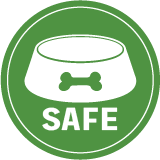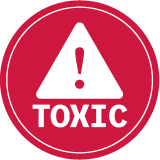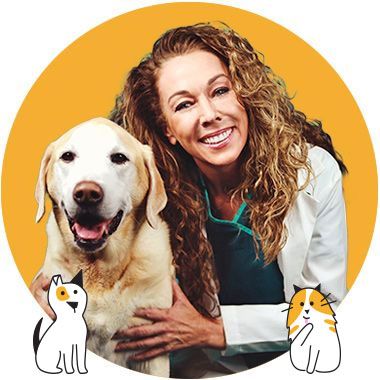Possible Culprit Discovered in Rising Pet Tumor Rates
He didn't expect to find this clue on his own two dogs' fur, but when he did, what he went on to uncover will alarm you about what your own dog or cat might be eating (most pets ARE fed this type of food). Find out exactly what variety of food he won't feed his dogs again ...

STORY AT-A-GLANCE
- Dr. Becker interviews Dr. Robert Turesky, a research scientist for the Division of Environmental Health Sciences at the New York State Department of Health, on his study of hair analysis to detect the presence of specific carcinogens in cooked meat
- As a test, Dr. Turesky analyzed the fur of his own dogs and much to his surprise, discovered the presence of one of the carcinogens he is researching. Since his dogs don’t eat grilled steaks or burgers, it seemed clear they were being exposed through their own processed pet food diet
- Dr. Becker discovered that including Dr. Turesky’s published study, there appear to be only two studies in existence that address the potential for carcinogenic substances in processed pet food. When we consider the fact that most dogs and cats eat commercial processed diets their entire lives, and when we also take into account the escalating incidence of cancer in pets – especially dogs – it seems this topic is deserving of more attention
- Based on Dr. Turesky’s findings on carcinogen levels in cooked poultry-based protein sources, added to what we know about the extreme processing dry pet food undergoes, it seems the worst thing you can feed your beloved dog or cat is a poultry-based kibble. As always, fresh raw, freeze-dried or air-dried meat-based diets, well-balanced, are Dr. Becker’s recommendation for healthy dogs and cats
Editor's Note: This article is a reprint. It was originally published May 27, 2013.
Today I have a very special guest talking with me via Skype, Dr. Robert Turesky. Dr. Turesky is a research scientist working for the Division of Environmental Health Sciences at the New York State Department of Health. Dr. Turesky and I met through a mutual acquaintance, Ted Kerasote, author of a wonderful new book about why dogs become ill and die younger than we believe they should.
Dr. Turesky's Research on Carcinogens in Cooked Meat
Dr. Turesky wrote a very interesting article for the Journal of Agricultural and Food Chemistry titled “Biomonitoring the Cooked Meat Carcinogen 2-Amino-1-methyl-6-phenylimidazol[4,5-b]pyridine in Canine Fur.” I asked Dr. Turesky to explain that very long title in layman's terms.
He explained that 2-Amino-1-methyl-6-phenylimidazol[4,5-b]pyridine is a very long name for a carcinogen. The scientific name is often shortened to PhIP. Dr. Turesky went on to say that he and his research partners are very interested in a class of chemicals called heterocyclic aromatic amines that form in well-done cooked meats, poultry and other protein-based products and their potential role in human cancer.
One of the goals of Dr. Turesky's research is to develop methods to monitor the exposure to these chemicals in humans, and one way he is doing that is by looking at the bioaccumulation of some of the chemicals in hair. When we eat these foods, they are absorbed by the gastrointestinal tract, pass through the liver, and after what's called first-pass metabolism, a small portion of the chemicals wind up in the bloodstream.
From there, they go through what is called systemic circulation. A tiny portion of the chemical ultimately reaches the hair follicle and becomes entrapped. As the hair shaft grows out, the chemical grows out with it, and this activity can be monitored.
First Experiment Involved Dr. Turesky's Own Dogs
Dr. Turesky says he can take out the hair shaft, cut it, break it open, and do chemical analysis on it using mass spectrometry methods. He first decided to try this on his own dogs to see if he could detect exposure to a potential carcinogen in their fur. He wasn't really expecting to get a positive result because his dogs don't eat grilled steaks or hamburgers. So he was very surprised – stunned, in fact – to find that his dogs did indeed have the carcinogen in their fur.
After the experiment with his dogs, Dr. Turesky set up a collaboration with the University of Minnesota's veterinary college to conduct a small pilot study of about 15 canines. Thirteen of those 15 dogs tested positive for the carcinogen in their fur.
I asked Dr. Turesky if he has done this type of research on mice or other animals. He replied that there's been a lot of work done in evaluating these chemicals, including experimental animal model studies using mice and rats. Non-human primate studies have also been conducted at the National Institutes of Health.
Some of the chemicals have proved to be carcinogenic in these animal models. Based on the biochemistry in the research done with animals, Dr. Turesky and other researchers have tried to extrapolate to humans. He notes that a structurally related class of chemicals called aromatic amines was first shown to be a bladder carcinogen based on an animal model study of a dog.
Research on Processed Pet Food Carcinogens Is Lacking
I was able to find only one other journal article related to pet foods and potential carcinogens. The study is titled "Mutagenic Activity and Heterocyclic Amine Carcinogens in Commercial Pet Foods," published in July 2003 in the journal Mutation Research. What this study showed was that out of 25 commercial pet foods analyzed for mutagenic activity (the ability to induce mutations in cells), all but one had a positive response. Fourteen of the 25 foods were analyzed for heterocyclic amine mutagens or carcinogens, and all but one contained a carcinogen.
From these findings, it's hypothesized there is a connection between dietary heterocyclic amines and cancer in animals consuming these foods.
So there are currently only two published studies, including Dr. Turesky's, demonstrating that when animals eat cooked meat products processed at high temperatures, carcinogens could be present. I find it shocking that Dr. Turesky's is only the second published article to discuss this, and wonder if it's because the veterinary community and pet food industry just aren't interested.
Dr. Turesky responded that he doesn't know whether or not the pet food industry is interested, but that there is actually a lot of research underway on how this class of chemicals affects humans. He says there's tremendous interest in the molecular epidemiology community on the role of well-done cooked meats and the risks for certain types of cancers.
Dr. Turesky went on to say the topic hasn't been extensively studied in animal models such as the canine, but certainly he and his colleagues would love to be able to explore the potential role of heat-processed foods and canine cancer.
Most Pets Eat Nothing But a Processed Diet All Their Lives
Dogs eat these types of foods consistently, whereas most humans have very diverse diets. So a dog's level of intake and exposure may be much higher than a human's and the risk much greater as a result. Dr. Turesky believes more research should be done on these chemicals and heat-processed pet foods.
I certainly agree. The fact is, very few pets are fed fresh or unprocessed foods. Most dogs and cats are fed extruded foods. “Extruded” means the batter or ingredient mix is forced through a dye and cooked at very high temperatures. This not only changes the molecular activity of the food, but according to Dr. Turesky's research, it could also potentially contribute to a heavier carcinogenic load.
I asked Dr. Turesky if when he tested his own dogs he was able to discern the level of carcinogenic material in the fur. He explained there are different levels of accumulation of the carcinogen in fur or human hair. One major factor is pigmentation. In his article, he notes that one of the dogs analyzed was Moses, his Bernese mountain dog. Moses has beautiful black hair over his back and hindquarters, and a white mane. When his coat was analyzed, it turn out that the black fur contained all the PhIP carcinogen, while the white fur contained none.
Dr. Turesky believes the reason behind this is that pigments in fur such as melanin or derivatives of melanin have a very high affinity for this carcinogen, so it accumulates in animals with dark fur more so than in animals with light colored coats.
Another factor is level of exposure, which is dependent on the diet of the individual. Other influences can include enzymes and metabolic factors involved in processing the carcinogens.
Dry Pet Food and Poultry-Based Proteins Are a Special Problem
I asked Dr. Turesky if in his small 15-dog study he fed dry food diets. I wanted to know if there were differences between dogs fed canned food or unprocessed food – for example freeze-dried raw — and dogs fed kibble. He explained that as far as he remembered all the dogs but one were fed dry food. And he believes the dog that was not fed kibble had one of the lowest levels – if not the lowest level – of carcinogen in his fur.
Next, I wanted to know if Dr. Turesky made any changes to his own dogs' diets after finding carcinogens in their fur. He replied that he has indeed changed their food. Their previous diet was built around poultry-based protein. As it turns out, under certain cooking conditions the highest levels of PhIP are produced in poultry. The levels can vary tremendously depending on how high the cooking temperature or duration is.
Dr. Turesky decided he didn't want his pets on a cooked, poultry-based diet. So he switched them to fish – salmon and herring. He hasn't yet re-analyzed his dogs' fur because it takes some time before the fur is replaced. He plans to retest in a few months to see if there's a decrease in levels of PhIP in their fur.
I asked him if he's still feeding kibble and he is, because as we all know, it's a challenge switching to fresh or raw foods, in part because of the convenience of kibble.
I'll be interested to see if the switch in protein from chicken to fish has any impact on the levels of carcinogen in his dogs' fur, because no matter the protein source in kibbled pet food, it's all extruded at extremely high temperatures.
High Heat and Longer Cook Times Increase Carcinogen Risk
I asked Dr. Turesky to talk about differences between meats processed at 200°F versus 400°F – is there a certain temperature at which these carcinogenic materials are more prevalent? Dr. Turesky responded that he can't answer with regard to dog food, but in the case of human foods, generally speaking, the higher the temperature and the longer the cooking duration, the higher the levels of PhIP and other heterocyclic amines present in cooked meat.
For example, if you roast meats rather than fry or broil them (roasting is done at lower temperatures), you will not produce appreciable amounts of these carcinogens. But when you raise the temperature above about 350°F, these chemicals will be produced at higher levels. They form at the surface of the meat that is in contact with the heating element, which is the location of the highest temperature. According to Dr. Turesky, generally these carcinogens are produced on the external surfaces of cooked meats like hamburgers or the skin or surface of poultry rather than in the center of the meat.
I explained to Dr. Turesky that most of the ingredients in kibbled pet foods have been processed twice. They're processed first to produce meat meal, and then they go through a second cooking process. So another question I have is, if there are multiple processing procedures performed at high temperatures, does it create risk for even greater carcinogenic exposure?
Will There Be Future Studies on Pet Food Carcinogens?
I told Dr. Turesky I could provide him with potential research study ideas involving pets, because the fact is he's the only person I'm aware of who's conducting this type of research. And while his focus isn't on the pet food industry, because he has conducted research on dogs, it seems to make sense that we take a minute to reflect on the potential ramifications of feeding highly processed foods to pets.
Next I asked Dr. Turesky what he thought about Ted Kerasote's new book, Pukka's Promise: The Quest for Longer-Lived Dogs. He explained he became aware of the book because his wife, who is studying to become a dog trainer, was reading it. She gave it to him to read, and he was particularly interested in the chapters about nutrition and canine health. Dr. Turesky contacted Ted immediately to make him aware of his recent study on PhIP and dog fur. They discussed the study and ultimately Ted introduced the two of us, and we were able to set up this interview.
Dr. Turesky re-emphasized that the levels of carcinogens in the canine diet – as in the human diet – are low, but unlike humans, many pets are consuming processed foods day in and day out for a lifetime. In fact, they're exposed to it in utero. They're exposed to these chemicals from before birth for breakfast, lunch, and dinner. So he is very interested in the role these chemicals play in disease risk in canines.
Dr. Turesky is hoping to be able to do further research on this very important topic in not only human health, but canine health as well. I asked him if he has any research projects planned involving dogs, and he replied that he's had some discussions with pet food companies as well as organizations that sponsor pet health research. He says funding is very hard to get in the current economy, but he's hopeful he'll be able to continue to pursue research in this area.
That's wonderful news, because Dr. Turesky's research has been enlightening for me, and it will be for others as well.
Raw vs. Processed Pet Food Diets
I also want to make the point that dogs and cats are carnivores (dogs are scavenging carnivores and cats are obligate carnivores). Raw meat, which is the food nature intended canines and felines to consume, does not contain heterocyclic amines. It's when meat is processed that the risk of carcinogens becomes a possibility.
So essentially, raw meat, in and of itself, is beautiful. It seems to me, although the research is not there, that freeze-dried or air-dried meats, because they're not heated at high temperatures, would be safe.
Dr. Turesky responded that with respect to the class of chemicals he is researching, that is true. He makes the point that while he's not a microbiologist, there are other health issues with respect to microbes in raw meat that should be considered. But with respect to heat-processed carcinogens — not only heterocyclic amines but also other potentially carcinogenic chemicals produced at high temperatures — clearly they are not present in uncooked meat.
I'd like to thank Dr. Robert Turesky for spending a few minutes chatting with me today about his important discovery of carcinogens in canine fur. I look forward to following his future research.











